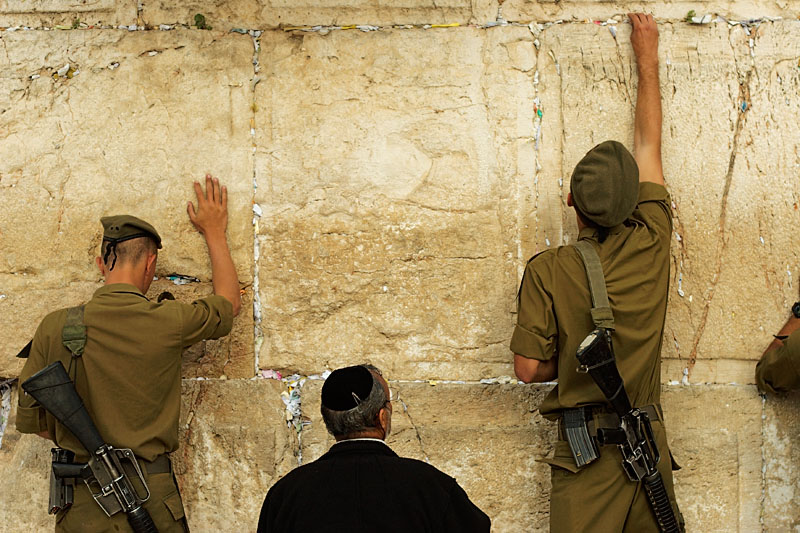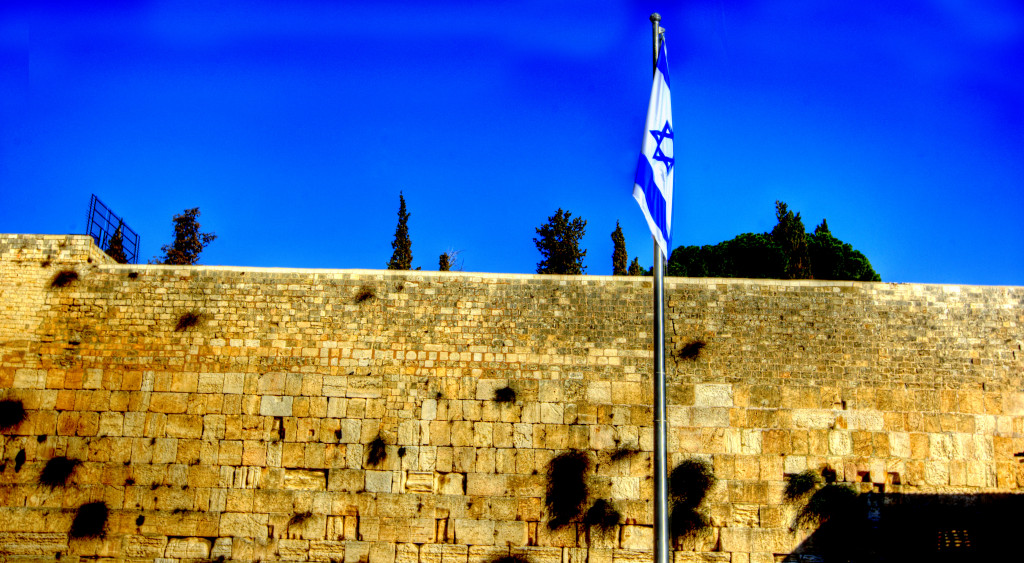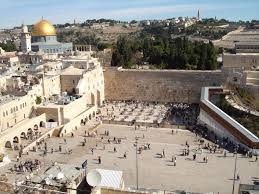The Kotel (The Western Wall)
June 23rd 2011
Visitors to the Holy Land usually start with a trip to the Kotel, also known as the Wailing Wall or Western Wall. The Kotel is the last remaining wall of the Temple Mount, upon which the Jewish Temple stood in antiquity. Since the Temple Mount itself is mostly off-limits to Jews, the Kotel is considered the holiest site in Judaism.
The Kotel is essentially a large outdoor synagogue. A long mechitza barrier separates the men’s section from the women’s section. Prayers take place all day, both via formal prayer groups and individuals making time to speak to God.
Due to the holiness of the site, it is customary to write requests and prayers on notes which are placed in between the big, heavy
stones. Once a year, before Passover, the notes are removed and buried in the ground. New visitors refill the cracks with more hopes and wishes.
Modest dress is required at the Kotel. Men will be asked to put on yarmulkes, and women should come with sleeves and long skirts. Prayer books are available but if you come at a busy time, it may be hard to get one.
 Friday nights at the Kotel are a special experience, with large numbers of people converging on the wall to welcome the Sabbath with song, dance and prayer. Jerusalem Day, which celebrates the reunification of Jerusalem and liberation of the Kotel in the Six Day War, is also a great time to visit the Kotel. Walk through the Damascus or Jaffa Gate into the Old City and join the throngs of people walking to the Western Wall, where they will express their joy by singing and dancing. On Shavuot at dawn you will find a large number of Jerusalemites who have walked from their neighborhoods in the middle of the night to pray and hear the Book of Ruth at the Kotel.
Friday nights at the Kotel are a special experience, with large numbers of people converging on the wall to welcome the Sabbath with song, dance and prayer. Jerusalem Day, which celebrates the reunification of Jerusalem and liberation of the Kotel in the Six Day War, is also a great time to visit the Kotel. Walk through the Damascus or Jaffa Gate into the Old City and join the throngs of people walking to the Western Wall, where they will express their joy by singing and dancing. On Shavuot at dawn you will find a large number of Jerusalemites who have walked from their neighborhoods in the middle of the night to pray and hear the Book of Ruth at the Kotel.













